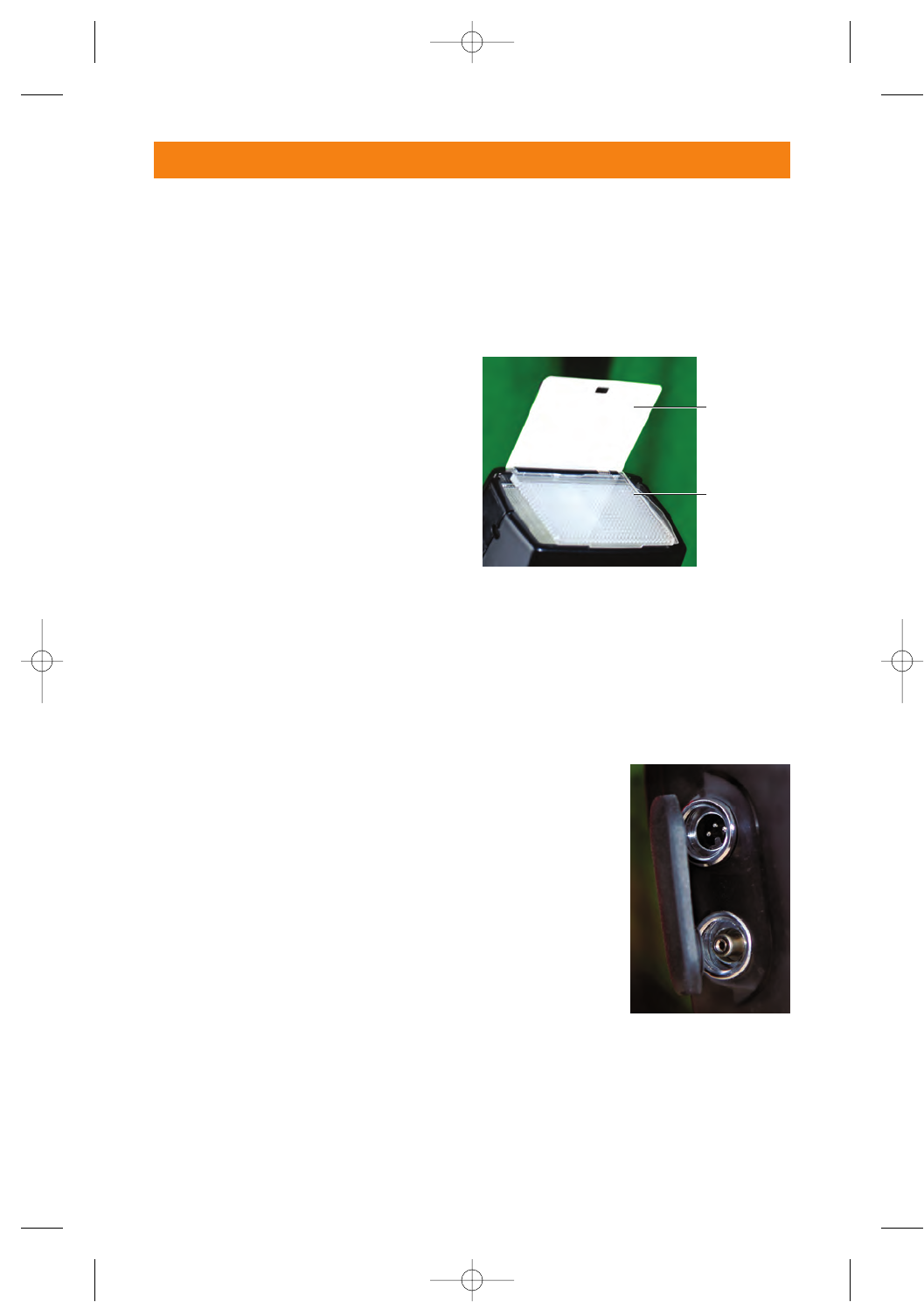✦ Light sensor for TTL wireless
flash. This sensor reads signals
from Commander units enabling
wireless flash.
✦ Light sensor for automatic non-
TTL flash. This sensor reads the
light reflected off of the subject
telling the flash when to shut off
when operating in AA (aperture
automatic mode), or A (non-TTL
automatic mode).
✦ AF-assist illuminator. Emits an
LED light array to achieve focus in
low-light situations.
✦ External power source terminal.
Nikon’s optional external power
sources can be plugged in to this
terminal, these power sources
include the SC-7 DC unit, the SD-8A
high performance battery pack, and
the SK-6/SK-6A power bracket unit.
✦ Flash head tilting angle scale.
Allows you to set the flash head at
45°, 60°, 75°, or 90° tilt.
✦ Modeling flash illuminator but-
ton. Fires the flash repeatedly to
allow a preview to what the shad-
ows and lighting looks like on the
subject.
✦ LCD panel. This is where all of the
Speedlight settings and controls
are viewed.
✦ Control buttons. These are used
to set and change setting on the
Speedlight.
✦ Ready light. Lights up indicating
the Speedlight is ready to fire. After
the Speedlight is fired this light
blinks until the Speedlight is fully
recycled and ready to fire again.
✦ Mounting foot locking lever.
Locks the Speedlight into the hot
shoe or the AS-19 Speedlight
stand.
✦ Wide-angle lens adaptor. This
built-in diffuser provides you with
the ability to use the Speedlight
with a lens as wide as 14mm with-
out having light fall-off at the
edges of the image.
✦ Bounce or Catchlight card. This
white card reflects light down into
the eyes providing a catchlight
when the flash is used in the
bounced position.
✦ TTL multiple
flash termi-
nal. This is
used for link-
ing more
than one
flash together
using TTL
metering;
requires a
Nikon TTL
flash cord
such as
the SC-27,
SC-26, SC-19,
or SC-18.
14 Part I ✦ Using the Creative Lighting System
